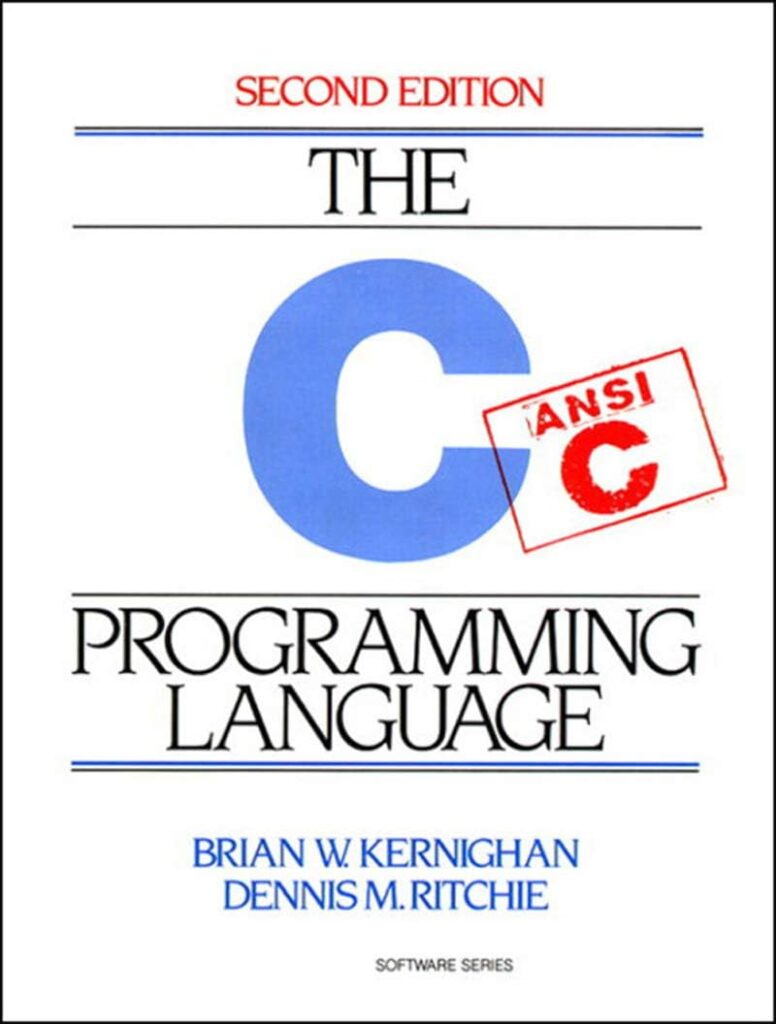
The Java Reflection API provides a powerful mechanism for inspecting and manipulating classes, methods, and fields at runtime. This capability allows developers to write more flexible and dynamic code, enabling features such as plugin architectures, frameworks, and libraries that operate on generic types.
At its core, the Reflection API gives you access to the metadata of classes that are normally hidden at compile time. With reflection, you can query information such as class names, method signatures, field types, and even invoke methods or access fields of objects dynamically.
To get started with reflection, you typically use the Class class. This class serves as an entry point to the Reflection API. Each class in Java has a corresponding Class object that allows you to retrieve various types of information about the class. For example, you can obtain the name of the class, its methods, constructors, and fields.
import java.lang.reflect.Method;
public class ReflectionDemo {
public static void main(String[] args) {
// Getting the Class object for the String class
Class<?> stringClass = String.class;
// Displaying the class name
System.out.println("Class Name: " + stringClass.getName());
// Retrieving and displaying all methods in the String class
Method[] methods = stringClass.getDeclaredMethods();
System.out.println("Methods:");
for (Method method : methods) {
System.out.println(" - " + method.getName());
}
}
}
In the example above, we obtain the Class object for the String class and print its name. We also list all the methods declared in the String class, demonstrating how easy it’s to inspect classes with reflection.
Reflection isn’t just limited to introspection; it also allows for dynamic invocation of methods. This means you can call methods on objects without knowing their names at compile time, which opens doors to incredibly dynamic and flexible designs. However, with great power comes great responsibility; reflection can introduce performance overhead and violate encapsulation principles.
Understanding the strengths and weaknesses of the Reflection API is essential for any Java developer aiming to harness its full potential. As we delve deeper into the subsequent sections, we will uncover various advanced techniques and practical applications of reflection, as well as considerations to keep in mind when using this powerful feature of Java.
Now loading...
Accessing Class Information
Accessing class information through the Java Reflection API is a fundamental skill that enables developers to gather insights about classes and their members at runtime. The Class class serves as the primary interface for these operations, providing methods that let you explore various class attributes. When dealing with class information, you can access not just the names of classes but also their fields, methods, constructors, and interfaces.
To obtain a Class object, you can use several methods, including:
Class.forName("fully.qualified.ClassName")– This returns the Class object associated with the specified class name.SomeClass.class– This provides the Class object for a class known at compile time.object.getClass()– This returns the Class object of the instance from which it’s called.
Once you have a Class object, you can retrieve its name using the getName() method. Additionally, you can gather information about its declared fields, methods, and constructors.
import java.lang.reflect.Field;
import java.lang.reflect.Constructor;
public class ClassInfoDemo {
public static void main(String[] args) {
try {
// Getting the Class object for the SampleClass
Class<?> sampleClass = Class.forName("SampleClass");
// Displaying the class name
System.out.println("Class Name: " + sampleClass.getName());
// Retrieving and displaying all declared fields in the SampleClass
Field[] fields = sampleClass.getDeclaredFields();
System.out.println("Fields:");
for (Field field : fields) {
System.out.println(" - " + field.getName() + " of type " + field.getType().getName());
}
// Retrieving and displaying all constructors in the SampleClass
Constructor<?>[] constructors = sampleClass.getDeclaredConstructors();
System.out.println("Constructors:");
for (Constructor<?> constructor : constructors) {
System.out.println(" - " + constructor.getName());
}
} catch (ClassNotFoundException e) {
e.printStackTrace();
}
}
}
In this example, we dynamically load a class named SampleClass using Class.forName(). We then retrieve and print the class name, its declared fields along with their types, and the constructors of the class. This demonstrates how you can gain comprehensive insights into a class structure, which is particularly valuable for frameworks or libraries that need to operate on a wide range of classes.
Moreover, the Reflection API allows you to check for class annotations, which is especially useful in frameworks that rely on metadata for configuration and behavior. You can use the getAnnotations() method to retrieve all annotations for a class, offering another layer of dynamic capability.
import java.lang.annotation.Annotation;
public class AnnotationDemo {
public static void main(String[] args) {
try {
// Getting the Class object for the AnnotatedClass
Class<?> annotatedClass = Class.forName("AnnotatedClass");
// Retrieving and displaying all annotations in the AnnotatedClass
Annotation[] annotations = annotatedClass.getAnnotations();
System.out.println("Annotations:");
for (Annotation annotation : annotations) {
System.out.println(" - " + annotation.annotationType().getName());
}
} catch (ClassNotFoundException e) {
e.printStackTrace();
}
}
}
In this snippet, we explore the annotations present in a class named AnnotatedClass. This capability allows developers to build sophisticated configurations and behaviors based on annotations, providing a powerful tool for creating extensible applications.
Accessing class information through the Reflection API is not just about querying class members; it’s about unlocking the potential of dynamic programming in Java. As we progress through the Reflection API, we will uncover the layers of its functionality that allow for even more advanced manipulation and interaction with classes at runtime.
Dynamic Method Invocation
Dynamic method invocation is one of the most powerful features of the Java Reflection API, so that you can call methods on objects without knowing their names or signatures at compile time. This flexibility especially important when building systems that require high levels of abstraction and adaptability, such as plugin architectures or frameworks that need to support various implementations of an interface.
To dynamically invoke a method, you first need to obtain a Method object representing the desired method. You can achieve this through the Class object associated with the instance of the class. The key steps involve identifying the method by name and its parameter types, followed by the invocation of the method on a specific object instance.
Here’s a simple example to illustrate dynamic method invocation:
import java.lang.reflect.Method;
public class DynamicMethodInvocationDemo {
public void sayHello(String name) {
System.out.println("Hello, " + name + "!");
}
public static void main(String[] args) {
try {
// Creating an instance of the class
DynamicMethodInvocationDemo demo = new DynamicMethodInvocationDemo();
// Getting the Class object
Class<?> clazz = demo.getClass();
// Retrieving the Method object for the sayHello method
Method method = clazz.getDeclaredMethod("sayHello", String.class);
// Invoking the method dynamically
method.invoke(demo, "World");
} catch (Exception e) {
e.printStackTrace();
}
}
}
In this example, we define a class with a method called sayHello. We then obtain a Method object representing sayHello using the getDeclaredMethod method on the Class object. The method is invoked dynamically by calling invoke, passing the instance of the object and the required parameters.
Dynamic invocation can also extend to methods with varying signatures. This allows you to write code that can adapt to different method parameters at runtime, allowing more versatile designs. Ponder the following example, which includes overloaded methods:
public class OverloadedMethods {
public void print(int number) {
System.out.println("Integer: " + number);
}
public void print(String message) {
System.out.println("String: " + message);
}
public static void main(String[] args) {
try {
OverloadedMethods obj = new OverloadedMethods();
Class<?> clazz = obj.getClass();
// Invoking the overloaded method with an integer
Method method1 = clazz.getDeclaredMethod("print", int.class);
method1.invoke(obj, 10);
// Invoking the overloaded method with a String
Method method2 = clazz.getDeclaredMethod("print", String.class);
method2.invoke(obj, "Hello");
} catch (Exception e) {
e.printStackTrace();
}
}
}
In the second example, we have two overloaded print methods. By specifying the parameter types, we can retrieve the correct Method object for each method signature and invoke them accordingly. This level of dynamism allows for a more generalized coding approach, particularly useful in frameworks and libraries that handle various data types and method signatures.
While dynamic method invocation provides great flexibility, it’s essential to be aware of the associated performance overhead. Reflection operations are generally slower than direct method calls due to the additional checks and lookups needed at runtime. Furthermore, using reflection can lead to code that’s harder to read and maintain, as it obscures the relationships between classes and their methods. Thus, it’s crucial to strike a balance between flexibility and performance when employing dynamic method invocation in your applications.
Field Manipulation with Reflection
Field manipulation through the Java Reflection API is a potent feature that allows you to interact with the fields of a class dynamically at runtime. This capability is particularly useful in scenarios where the structure of classes may not be known until runtime or when you need to modify or read private fields without altering their access modifiers. By using reflection, you can gain insights into a class’s fields and manipulate them according to your application’s requirements.
To access and manipulate fields, you start by obtaining the Field objects associated with a class. Similar to methods, you can retrieve fields using the Class object, which provides methods such as getDeclaredFields() for retrieving all fields, including private ones, or getField() to access public fields specifically.
Here’s an example that demonstrates how to get and set the value of a private field using reflection:
import java.lang.reflect.Field;
public class FieldManipulationDemo {
private String secret = "Hidden Message";
public static void main(String[] args) {
try {
// Creating an instance of the class
FieldManipulationDemo demo = new FieldManipulationDemo();
// Getting the Class object for the FieldManipulationDemo class
Class<?> clazz = demo.getClass();
// Accessing the private field "secret"
Field secretField = clazz.getDeclaredField("secret");
secretField.setAccessible(true); // Bypass private access
// Getting the current value of the secret field
String currentValue = (String) secretField.get(demo);
System.out.println("Current Value: " + currentValue);
// Setting a new value to the secret field
secretField.set(demo, "New Secret Message");
String updatedValue = (String) secretField.get(demo);
System.out.println("Updated Value: " + updatedValue);
} catch (Exception e) {
e.printStackTrace();
}
}
}
In this example, we first create an instance of FieldManipulationDemo and retrieve its Class object. We then access the private field named secret using getDeclaredField() and set its accessibility to true to allow manipulation. We read the original value, update it, and read the new value again to confirm the change. This showcases how reflection can be used to bypass access control and directly manipulate fields, regardless of their visibility.
Field manipulation is not limited to just reading and writing values; it can also be beneficial when working with frameworks that utilize annotations or other metadata-driven designs. For instance, you might want to serialize an object’s fields dynamically or configure them based on external configurations without hardcoding the property names in your code.
Consider a scenario where you want to serialize fields of an object to JSON, but the object type is determined at runtime. Here’s an illustrative example:
import java.lang.reflect.Field;
import java.util.HashMap;
import java.util.Map;
public class JsonSerializer {
public static String serialize(Object obj) {
Map<String, Object> jsonMap = new HashMap<>();
Class<?> clazz = obj.getClass();
// Accessing all declared fields
Field[] fields = clazz.getDeclaredFields();
for (Field field : fields) {
field.setAccessible(true); // Allow access to private fields
try {
jsonMap.put(field.getName(), field.get(obj));
} catch (IllegalAccessException e) {
e.printStackTrace();
}
}
return jsonMap.toString(); // Simplified JSON representation
}
public static void main(String[] args) {
class Person {
private String name = "Neil Hamilton";
private int age = 30;
}
Person person = new Person();
String json = serialize(person);
System.out.println("Serialized JSON: " + json);
}
}
In this example, the serialize method dynamically accesses all fields of the provided object, irrespective of their visibility, and collects their names and values in a map. This can then be easily transformed into a JSON string or any other format as needed. Such utility functions can significantly enhance the flexibility of applications that need to handle various types of objects without prior knowledge of their structure.
However, as with dynamic method invocation, manipulating fields through reflection comes with its own set of trade-offs. While it allows for powerful capabilities, it can lead to code that is harder to understand, increases maintenance overhead, and can introduce performance penalties due to the non-traditional access patterns. It is crucial to evaluate whether the advantages of using reflection outweigh the downsides in your specific use case.
Creating Instances at Runtime
The ability to create instances at runtime using the Java Reflection API is a testament to the flexibility and dynamism of the language. This functionality is particularly important when you want to instantiate classes whose specifics may not be known until the application is running, enabling powerful design patterns such as Dependency Injection and Factory patterns. By using reflection, you can construct objects on the fly, allowing for a more modular and adaptable codebase.
To create an instance of a class using reflection, you can utilize the Constructor class. The process generally involves obtaining a Class object for the desired type, retrieving the appropriate Constructor object, and then invoking the newInstance method. Here’s a simple example to illustrate this process:
import java.lang.reflect.Constructor;
public class RuntimeInstanceCreationDemo {
private String message;
// Constructor
public RuntimeInstanceCreationDemo(String message) {
this.message = message;
}
public void displayMessage() {
System.out.println("Message: " + message);
}
public static void main(String[] args) {
try {
// Getting the Class object for RuntimeInstanceCreationDemo
Class<?> clazz = RuntimeInstanceCreationDemo.class;
// Retrieving the Constructor that takes a String parameter
Constructor<?> constructor = clazz.getConstructor(String.class);
// Creating an instance of RuntimeInstanceCreationDemo
RuntimeInstanceCreationDemo instance = (RuntimeInstanceCreationDemo) constructor.newInstance("Hello, Reflection!");
// Invoking a method on the created instance
instance.displayMessage();
} catch (Exception e) {
e.printStackTrace();
}
}
}
In this example, we define a class with a constructor that takes a single String parameter. We first obtain the Class object for the class and then retrieve the specific Constructor object corresponding to the constructor. Using newInstance, we create an instance of the class with the value “Hello, Reflection!” and subsequently invoke a method on that instance.
The power of runtime instance creation becomes especially apparent in scenarios where you might not know which class to instantiate until runtime. For instance, think a plugin system where different classes implement a common interface. You can load and instantiate these classes without hardcoding their names, which leads to a more extensible application architecture.
import java.lang.reflect.Constructor;
public class PluginLoader {
public static void main(String[] args) {
String pluginClassName = "MyPlugin"; // This could be determined at runtime
try {
// Loading the class dynamically
Class<?> clazz = Class.forName(pluginClassName);
// Assuming the class has a no-argument constructor
Constructor<?> constructor = clazz.getConstructor();
Object pluginInstance = constructor.newInstance();
// Assuming the plugin instance has a method called execute
Method executeMethod = clazz.getMethod("execute");
executeMethod.invoke(pluginInstance);
} catch (Exception e) {
e.printStackTrace();
}
}
}
In this plugin loader example, we obtain the class name for a plugin at runtime, dynamically load it, and then create an instance of it. This approach can be pivotal for applications that require runtime flexibility, such as applications that need to load different implementations based on user preferences or configurations.
While creating instances at runtime is powerful, there are trade-offs to consider. Reflection typically incurs a performance cost compared to direct instantiation due to the additional checks and lookups performed at runtime. Moreover, it can complicate code readability and maintenance, especially when used extensively. Therefore, as with all advanced features, it is critical to assess whether using reflection for instance creation aligns well with your application’s architecture and performance requirements.
Reflection and Performance Considerations
Using the Java Reflection API comes with notable performance considerations that every developer should be aware of. While the flexibility it provides can enhance the dynamism of applications, it also introduces complexities that can impact performance in significant ways. Understanding these implications will help you make informed decisions about when and how to use reflection in your projects.
One of the primary performance costs associated with reflection arises from its inherent overhead. Accessing elements via reflection is generally slower than direct access due to the additional checks and runtime resolution that must occur. When you invoke a method or access a field reflectively, the Java Virtual Machine (JVM) engages in a series of operations—such as checking for accessibility, resolving the member at runtime, and handling various exceptions—that can add latency compared to normal method calls or field access.
For instance, invoking a method dynamically can be several times slower than invoking it directly. This performance hit may be acceptable in situations where reflection is used sparingly, like in initialization code or frameworks that rely on reflection for extensibility. However, if reflection is heavily used in performance-critical paths, such as in tight loops or high-frequency operations, it can lead to noticeable slowdowns.
public class ReflectionPerformanceDemo {
public void regularMethod() {
// Simulate some work
for (int i = 0; i < 1_000_000; i++) {}
}
public void reflectedMethod() throws Exception {
Method method = getClass().getDeclaredMethod("regularMethod");
method.invoke(this);
}
public static void main(String[] args) throws Exception {
ReflectionPerformanceDemo demo = new ReflectionPerformanceDemo();
long startTime = System.nanoTime();
demo.regularMethod();
long endTime = System.nanoTime();
System.out.println("Direct method call time: " + (endTime - startTime) + " ns");
startTime = System.nanoTime();
demo.reflectedMethod();
endTime = System.nanoTime();
System.out.println("Reflection method call time: " + (endTime - startTime) + " ns");
}
}
In the above example, we define two methods: one that performs a regular method call and another that invokes the same method reflectively. By measuring the execution time of each method, we can observe the performance disparity. Such insights are crucial in deciding whether reflection fits within the performance envelope of your application.
Another consideration relates to code maintainability and type safety. Reflection allows you to bypass compile-time checks, which can lead to runtime errors that are often more difficult to debug and resolve. When a method name or field name is misspelled, or when incorrect parameter types are provided, these issues won’t surface until the code is executed. This can make your codebase harder to maintain, especially for team environments where multiple developers are working on the same code.
public class ReflectionErrorDemo {
public void greet(String name) {
System.out.println("Hello, " + name + "!");
}
public static void main(String[] args) {
try {
ReflectionErrorDemo demo = new ReflectionErrorDemo();
Method method = demo.getClass().getDeclaredMethod("greet", String.class);
method.invoke(demo, 123); // This will throw an exception due to type mismatch
} catch (Exception e) {
e.printStackTrace(); // Runtime error for type mismatch
}
}
}
In this example, we attempt to invoke a method with an incorrect parameter type. While the method exists, the mismatch leads to a runtime error that would have been caught at compile time with a direct method call. This underlines the importance of careful consideration when using reflection to prevent such pitfalls.
When using reflection, it is also advisable to cache reflective operations where possible. For example, if you are repeatedly accessing the same method or field, you can store the Method or Field instances after the first lookup. This can mitigate the performance degradation caused by repeated reflection calls. Here’s an example of how caching can improve performance:
public class ReflectionCachingDemo {
private static Method cachedMethod;
public void displayMessage(String message) {
System.out.println(message);
}
public static void main(String[] args) throws Exception {
ReflectionCachingDemo demo = new ReflectionCachingDemo();
if (cachedMethod == null) {
cachedMethod = demo.getClass().getDeclaredMethod("displayMessage", String.class);
}
for (int i = 0; i < 1_000_000; i++) {
cachedMethod.invoke(demo, "Hello!");
}
}
}
In this demonstration, we check if the Method object is already cached before invoking it. By caching this object, we avoid the overhead associated with reflection for every invocation, thereby enhancing performance.
In summary, while the Java Reflection API offers considerable flexibility and power, it’s essential to navigate its performance implications with care. Developers should use reflection judiciously, always weighing the necessity of its usage against the potential costs to performance and maintainability. When used wisely, reflection can be a valuable tool in a Java developer’s toolkit, enabling highly dynamic and extensible systems without compromising the integrity and efficiency of the application.
Source: https://www.plcourses.com/java-reflection-api-advanced-techniques/





